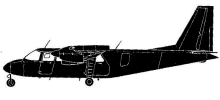Incident Overview

Description
Air-India Flight 181/182 was operated by Boeing 747 “Emperor Kanishka”. It arrived at Toronto, Canada after a flight from Bombay, Delhi and Frankfurt. In Toronto a 5th spare engine was fitted below the left wing. The engine had to be ferried for repairs in India. All passengers had disembarked for custom and immigration checks. Some passengers re-boarded the flight to continue to Montreal. A total of 270 passengers boarded the flight. In addition a fresh crew of 22 came aboard. The aircraft took off from Toronto runway 24L at 00:16 UTC. The flight to Montreal was uneventful and the airplane arrived at 01:10 UTC. Sixty-five passengers destined to Montreal along with three Air-India personnel deplaned at Montreal. The remaining 202 passengers remained on board the aircraft as transit passengers and were not allowed to disembark. The flight number changed to AI 182 because the flight was heading back to Bombay with en route stops in London and Delhi. A total of 105 passengers boarded the flight through gate 80. The aircraft took off from Montreal at 02:18 UTC. Its estimated time of arrival at London was 08:33 UTC. At 07:15 UTC, at FL310 over the Atlantic Ocean an explosion occurred in the forward cargo compartment, causing a rapid decompression. The aft portion of the aircraft separated from the forward portion before striking the water. The wreckage sank to a depth of 6700 feet. From the wreckage retrieved no direct evidence was found of an explosive device. However, there is a considerable amount of circumstantial and other evidence that an explosive device caused the occurrence. Furthermore because an explosive device detonated in Tokyo the same day. Just 55 minutes before Air-India 182 crashed, A bag from CP Air Flight 003 exploded at Tokyo-Narita Airport, just 55 minutes before Air India 182 crashed. This was probably an interlined unaccompanied suitcase to be placed on Air-India Flight 301 to Bangkok. Investigation determined that a suitcase was also interlined unaccompanied from Vancouver via CP Air Flight 060 to Toronto. In Toronto, there is nothing to suggest that the suitcase was not transferred to Terminal 2 and placed on board Air India Flight 181/182 in accordance with normal practice. The aircraft departed Toronto for Montreal-Mirabel and London with the suitcase unaccompanied. CONCLUSIONS The Canadian Aviation Safety Board respectfully submits as follows: Cause-Related Findings: 1. At 0714 GMT, 23 June 1985, and without warning, Air India Flight 182 was subjected to a sudden event at an altitude of 31,000 feet resulting in its crash into the sea and the death of all on board. 2. The forward and aft cargo compartments ruptured before water impact. 3. The section aft of the wings of the aircraft separated from the forward portion before water impact. 4. There is no evidence to indicate that structural failure of the aircraft was the lead event in this occurrence. 5. There is considerable circumstantial and other evidence to indicate that the initial event was an explosion occurring in the forward cargo compartment. This evidence is not conclusive. However, the evidence does not support any other conclusion.
Source of Information
https://epe.lac-bac.gc.ca/100/206/301/pco-bcp/commissions/air_india/2010-07-23/www.majorcomm.ca/en/reports/finalreport/default.htm, https://reports.aviation-safety.net/1985/19850623-2_B742_VT-EFO(Kirpal).pdfhttps://epe.lac-bac.gc.ca/100/206/301/pco-bcp/commissions/air_india/2010-07-23/www.majorcomm.ca/en/reports/finalreport/default.htm, https://reports.aviation-safety.net/1985/19850623-2_B742_VT-EFO(Kirpal).pdfPrimary Cause
Explosion in the forward cargo compartment of the aircraft.Explosion in the forward cargo compartment of the aircraft.Share on:




